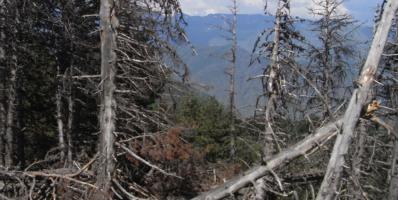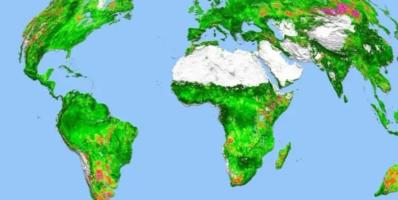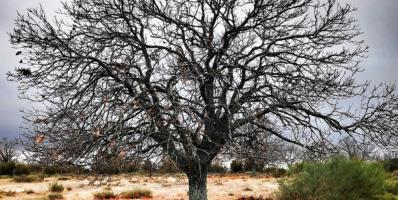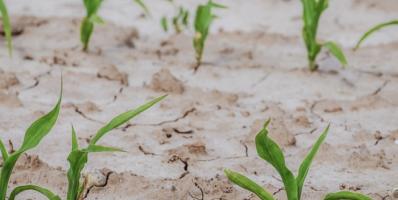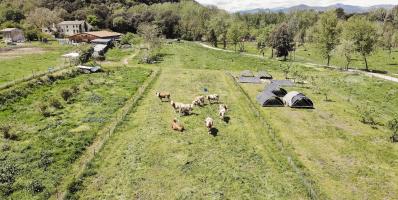Ecosystem Functioning
How can the carbon sink capacity of a forest be improved? How does climate and global change affect the phosphorus cycle? What volatile organic compounds do plants emit? What are the benefits of regenerative agriculture? At CREAF we study nature and how it works, to learn how to restore ecosystems and conserve the ecosystem services it provides us, and maintain the cycles of energy and nutrients that keep the planet alive. We follow the impact on nature of atmospheric changes, climate change, changes in land use or disturbances, to see what consequences it may have on food security, on the regulation of the climate, of the water cycle, or in the conservation of biodiversity, among others.
We study how nature works at various scales, from the organism to the ecosystem, combining experimentation with modelling, and making long-term follow-ups.

Focus areas
- Functional biogeography
- Chemical ecology, ecotoxicology, metagenomics, and metabolomics
- Soil function and restoration
- Atmosphere-biosphere interactions
- Stores and flows of water, carbon, and nutrients
For some time it has been known that the size, form, and function of organisms change depending on the environmental conditions where they live, but the causes and consequences of this diversity are still not well understood. Functional biogeography attempts to answer these questions by centering on the concept of the functional trait, defined as any characteristic of an organism which affects its demography (i.e., its establishment, growth, survival, or fertility). Functional traits make it possible to relate organism characteristics with the properties of the systems in which they exist (communities and ecosystems), and are complementary to the more traditional approaches based on geographical species distributions.
Functional biogeography puts an emphasis on how functional traits vary on broad geographic scales (regional, global), and in this sense the field is a relatively new one. With this approach, the field contributes very powerful tools for identifying the regions most vulnerable to environmental changes (climate change, among them) and determining the impacts of these environmental changes on ecosystem function and services provided to society.
The main lines of work and experience of CREAF in this field include:
- Patterns of distribution of functional traits and the relationships between them: We study the global patters of the distribution of functional traits in both plants and animals - how these traits are related among each other and to what degree these relationships reflect general laws governing organism function.
- Responses to natural disturbances: We study the functional traits determining the responses of plants and animals to key disturbances in a Mediterranean context, such as drought and fire. We also analyze the relationship between functional traits related with resource use and those associated with high resistance to disturbances and posterior regeneration.
- Response to anthropogenic disturbances: We study the functional features determining the responses of plants and animals to human-made disturbances such as urbanization and deforestation.
- Changes in community composition and structure: We study the role of functional traits in changes in the composition and structure of communities of plants and animals along environmental gradients, and assess how these changes affect the functional properties of ecosystems (e.g., flows of water and carbon) and the environmental services they provide.
What have we done?
At CREAF we study the relationships between the chemical and elemental compositions of species, communities, and soil with basic ecosystem function characteristics (flows of matter and energy, nutrient cycles, and growth strategies) and structure (diversity, characteristics of the trophic network, among others). We also use metabolomic analyses to study how the functioning of organisms or environment (e.g. soil) change under changing environmental conditions. Later, this information can be related with observed changes at different levels: changes in growth, mortality, herbivory, elemental composition and stoichiometric proportions, among others.
Ecotoxicological studies help us understand the relevance of different contaminants for trophic networks in order to evaluate impacts along spatial and temporal gradients. Finally, with metagenomic studies, we study the evolutionary responses of organisms and populations to environmental changes in the short, medium, and long term. This allows the addition of a temporal dimension to our studies, making them more innovative.
The main lines of work and experience of CREAF in this field include:
- Chemical ecology: We study the chemical mechanisms controlling the responses of microorganisms, flora, and fauna to changes in climate, nitrogen deposition, and increases in atmospheric CO2 concentrations.
- Metabolomics and metagenomics: We measure the impact of climatic changes on the global function of organisms by introducing the omics techniques to ecological studies in the field. We conduct metabolomic studies with determination by 1HNMR, HPLc-MS/MS, and 31P NMR, and we use metagenomics to study plant species’ adaptation and genetic and epigenetic changes in response to climate change.
- Elemental composition: We study alterations to elemental compositions and stoichiometric ratios in relation to environmental change.
- Biogeochemical cycles: We study alterations of biogeochemical cycles caused by drought and warming, species invasions, and nitrogen deposition.
- Biogeochemical niche: We carry out studies probing the biogeochemical niche hypothesis.
- Human ecology: We study the elemental and molecular composition of the environment (food, air, water) to understand how these relate to human ecology, including human health and morphometry.
- Ecotoxicology: We study the relevance of key contaminants for trophic networks.
- Biogeochemical cycles: We study alterations of biogeochemical cycles caused by drought and warming, species invasions, and nitrogen deposition.
- Chemical status of ecosystems: We study how meteorological variability and extreme events affect the chemical status of ecosystems.
- Data mining: We coordinate large data bases which compile the impacts of different global change factors on the chemical composition of the plant-soil system.
What have we done?
The soil is responsible for key ecosystem functions such as the production of food and biomass, nutrient recycling, and the sustainability and biodiversity of terrestrial ecosystems. The soil also contributes to climate regulation via carbon sequestration in the form of organic matter, and reduces emissions of greenhouse gases such as CO2 and N2O. In addition, soil has a fundamental role in the regulation of the water cycle through water storage and the degradation and immobilization of pollutants, providing clean air, soil and water. Soil also provides a physical support for human activities and structures.
For these reasons, the role of soil in food production and forestry and the regulation of the climate are key research areas within the contexts of human population growth, changing weather patterns, and changes in land use. Soil degradation, as a result of human activities, affects large areas of the world and has a direct impact on its functions, underscoring the need to prevent degradation through the adoption of sustainable management practices and the improvement in soil restoration technologies.
The main lines of work and experience of CREAF in this field include:
- Soil quality: We analyze the physical, chemical, and biological properties of soil.
- Soil ecology: We evaluate taxonomic and functional diversity of trophic networks composed of plants, fauna, and microorganisms in forests, shrublands, and agricultural ecosystems.
- Nutrient cycles: We quantify C storage, soil-atmosphere gas exchange, and nutrient cycles, with particular emphasis on N and P. Our studies include natural soils as well as soils affected by anthropic disturbances (e.g. global change or pollution).
- Restoration of degraded land: We research the creation of technosols with mineral waste and organic waste substrates.
- Soil contaminants and remediation: We carry out evaluations on the necessity and/or required intensity of restoration activities and their effectiveness with time.
- Ecotoxicology: We evaluate the ecotoxicology of contaminants and wastes using standardized bioassays (ISO, OECD) based on microorganisms, plants, and invertebrates.
- Organic wastes and amendments: We evaluate the use of organic amendments to improve soil fertility or decontamination, as well as post-treatments which improve their efficiency.
- Soil genesis and optimal use: We assess the genesis and diversity of soils of a given area, as well as optimal uses and limitations.
- Impacts on ecosystem services: We evaluate how human activities (land use change, pollution, climate change, extreme climatic events) affect the physicochemical properties of soil and its trophic networks, and how the provision of ecosystem services may be compromised.
What have we done?
Plants emit a large diversity and quantity of volatile organic compounds (VOCs) which have different physiological and ecological functions. These compounds also affect atmospheric chemistry and have final cascading effects on communities of organisms, ecosystems, air quality, and climate. Current projections predict a substantial increase in VOC emissions in response to global change. Temperature is expected to be affected, which itself increases the volatilization and synthesis of VOCs. Not only leaves are affected but flowers as well, for which VOCs play a key role.
Exposure to increased concentrations of ozone is also causing stress in plants and altering VOC emissions. In addition, ozone is significantly reducing the lifetime of these compounds and is interfering in some of their ecological functions. The study of VOCs is becoming more crucial in regards to their interactions with NOx, other anthropogenic molecules, and their relevance for air quality and impacts on human health.
Our research is made unique by our particular lines of work, approaches, and backgrounds. We combine knowledge from biochemistry and plant physiology (secondary metabolism), terrestrial ecology, and atmospheric chemistry; with such combinations we provide innovative outlooks on the functioning of living organisms, ecosystems and global change processes.
The main lines of work and experience of CREAF in this field include:
- Ecophysiology of Mediterranean plants: We study the ecophysiological responses of Mediterranean plants to climate change.
- VOC emissions and global change: We analyze how global change affects biogenic emissions of volatile organic compounds.
- Plants' VOC contents: We analyze how global change can modify volatile organic compound contents in the different parts of plants.
- VOC characterization: We characterize plant terpene emissions and contents in different climate zones (Mediterranean, tropical, boreal, etc.).
What have we done?
Why do we study this topic? What are two or three challenges that we focus on with this line of research? Provide two or three challenges or key messages. 100-200 words.
In terrestrial ecosystems, living organisms participate in the mediation of carbon, water, and nutrient cycles, both at local scales (ecosystems) and at the planetary level (the biosphere). Such biological control determines the quantity and quality of ecosystem services provided to human beings. For instance, at a global scale, forests absorb around 25% of human emissions of CO2 to the atmosphere, thereby helping to reduce the greenhouse effect. Studying how water, carbon and nutrients, enter and circulate within terrestrial ecosystems is key for understanding the functioning of ecosystems and their variability in space and time, as well as for predicting how this functioning may be modified in the contemporary context of global change.
The main lines of work and experience of CREAF in this field include:
- Stocks and sources of forest C: We study the variability of these stocks in a context of global change using data from regional and national forest inventories.
- Water flows: We study the flow of water between the soil, terrestrial ecosystems, and the atmosphere (evaporation, transpiration) and local, regional, and global scales.
- Nutrients: We analyze the stocks, flows, and imbalances between N, P, and K in ecosystems at local, regional, and global scales in a context of global change.
- Integrative and multidisciplinary approach to water flows: We create water budgets taking into account inputs from the atmosphere and consumption by natural systems for different regional planning models.
- Climate change and water budgets: We study the effects of increased temperatures and changes in precipitation cycles on water flows in ecosystems and human activities.
- Modeling of water and carbon flows in forests: We use modeling to study how these flows will change under different climate change and forest management scenarios.
- Carbon sequestration through soil application of organic amendments and wastes: We carry out studies on the improvement of soil fertility and restoration of soils degraded by different processes.
- Pyrolysis of biomass (biochar): We evaluate the use of this technology for long-term carbon storage.



